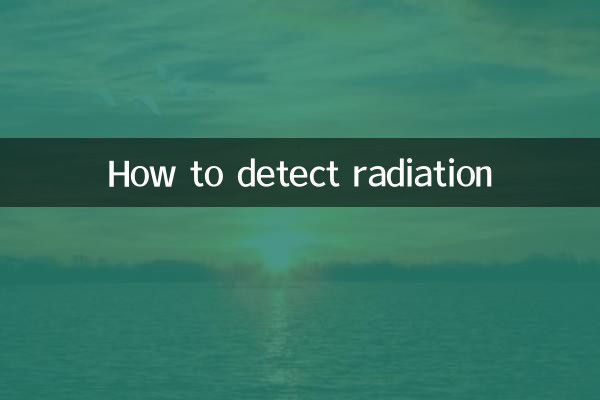How to Detect Radiation: A Complete Analysis of Methods and Tools
Radiation is invisible, but its presence can have serious health effects. Whether it is radiation from electrical appliances in daily life or high-risk scenarios such as nuclear radiation, it is crucial to know how to detect radiation. The following is practical information about radiation detection that has been a hot topic on the Internet in the past 10 days, presented to you based on structured data.
1. Types and common sources of radiation

| Radiation type | primary source | Potential risks |
|---|---|---|
| electromagnetic radiation | Cell phones, Wi-Fi routers, microwave ovens | Long-term exposure may affect the nervous system |
| ionizing radiation | X-ray machine, nuclear power plant, radioactive material | High doses may cause cancer |
| ultraviolet radiation | Sunlight, UV light | Skin lesions, cataracts |
2. Commonly used tools for radiation detection
The following are the mainstream radiation detection equipment and their characteristics currently on the market:
| Tool name | Detection range | Applicable scenarios | price range |
|---|---|---|---|
| Geiger counter | ionizing radiation | Nuclear facilities, medical environment | 500-3000 yuan |
| Electromagnetic field detector | electromagnetic radiation | home, office | 200-1000 yuan |
| UV index meter | ultraviolet radiation | Outdoor activities, sun protection monitoring | 100-500 yuan |
3. How to use radiation detection tools correctly
1.Choose the right tool: Select the corresponding equipment according to the detection needs. For example, to detect the radiation of home appliances, an electromagnetic field detector is required.
2.Calibration equipment: Make sure the device has been calibrated before use to avoid data errors.
3.Multi-point detection: Measure multiple times at different locations in the target area and take the average.
4.Record data: Save the test results for subsequent analysis and comparison.
4. Radiation safety standard reference
| Radiation type | safety threshold | Risk of exceeding the standard |
|---|---|---|
| electromagnetic radiation | <40 microwatts/cm2 | Headache, insomnia |
| ionizing radiation | <0.5 microsievert/hour | Cell mutation |
| ultraviolet radiation | UVI<3 is safe | skin cancer risk |
5. Radiation protection suggestions in daily life
1.Reduce usage time: Avoid prolonged contact with high-radiation equipment, such as mobile phones and microwave ovens.
2.keep distance: Keep a safe distance from the radiation source, such as more than 1 meter away from the Wi-Fi router.
3.shielding protection: Use radiation protection clothing, films and other tools to reduce radiation exposure.
4.Regular testing: Check radiation levels regularly, especially when working or living in high-risk environments.
6. The latest hot spot: the demand for radiation detection caused by Japan’s nuclear wastewater discharge
In the past 10 days, Japan's nuclear wastewater discharge issue has once again attracted global attention to radiation detection. Many consumers are beginning to purchase portable radiation detectors, especially those living in coastal areas. Experts suggest that ordinary people do not need to panic, but it is wise to understand basic radiation detection knowledge and have simple tools.
With the above methods and tools, you can effectively detect radiation and protect your own health. Scientific understanding and correct protection are key!

check the details

check the details